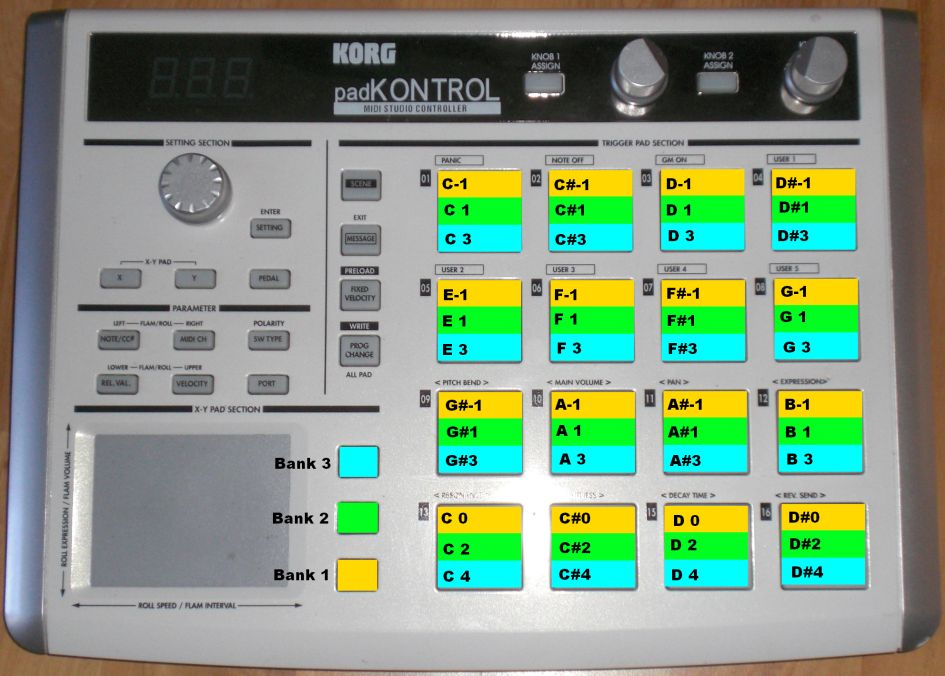

It seems the best approach is to start at the top pads and work my way down, after a lot of fiddling I managed to get all 10 notes mapped.īut I would like to know what's going on. With each additional mapping I add things get harder to fix. I can then go back in and fix pads A5,A6 and A7 but I don't understand what is going on and why it is just changing my mapping around. The moment I map A12 to F1 and close my mapping is suddenly like this: But at the 7th pad I give up, stuff just moves around. I have managed to map 6 pads by trail and error, somehow. Use the rotary encoder to choose the note I want that pad to play Hit the pad I want to change the mapping forĢ. Must be a mistake I made? I manage to restore that.īut every mapping I make there is a good chance others just shift around again. 45 47 C - 1 D - 1 E - 1 F - 1 G - 1 A - 1 B - 1 CO DO EO FO GO AO 0 C1. Map A6 to E1, hmm that's weird, my A5 mapping seems gone. MIDI assigns a Key Number to every note of the scale with a range of 0 to 127. Note that in this solution, the note names in the array start from A to G. If your note numbers are 0 based, for example in piano from 0 to 88, then you can comment this line out. We adjust the index to start from 0 (hence noteNumber - 21 at the beginning). These maps are required to properly assign the same percussion notation to various playback devices, and are also used to accommodate the many. Select Pad A5, map that to C1, that works. A0 in midi is the first note and its number is 21. A Percussion MIDI Map is simply a list that matches each percussion instrument in a sound library with a particular MIDI note number (e.g. So I created an empty MIDI program, edit it and choose 'EDIT PAD MAP'.

I would like to map the pads in bank A to the MIDI notes required for the Vermona.


 0 kommentar(er)
0 kommentar(er)
